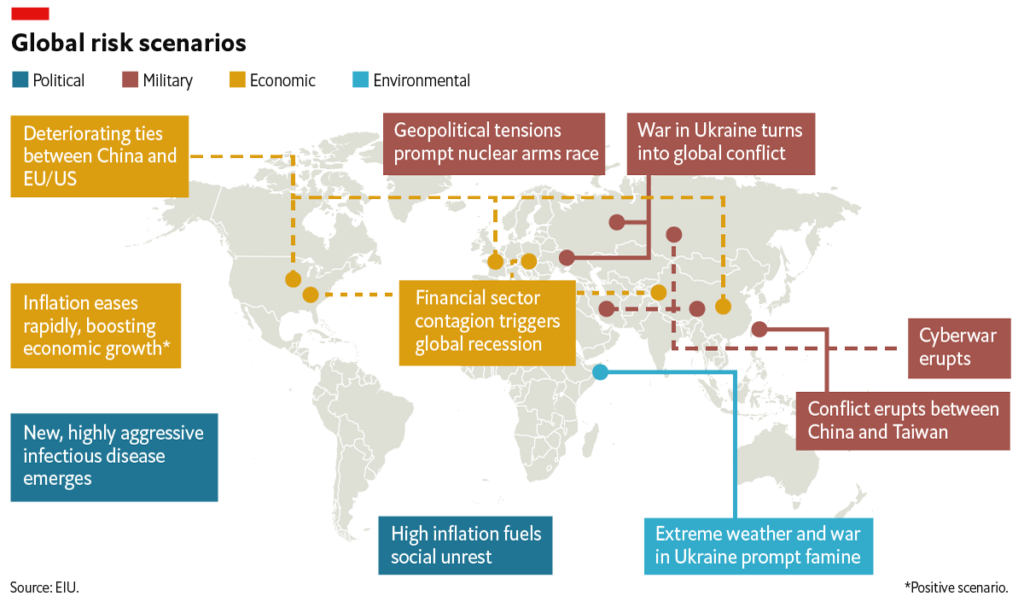Extreme heat adaptation is becoming increasingly crucial as climate change drives temperatures to unprecedented highs. In cities like Ahmedabad, India, rising heat levels pose significant risks to worker health, particularly for those in vulnerable sectors. Studies, such as the Ahmedabad heat study, highlight the urgent need for effective heat action plans that prioritize the needs of informal workers. As heatwaves intensify, urban resilience strategies are essential to protect millions from the life-threatening effects of extreme temperatures. By building comprehensive datasets and collaborating with local communities, we can develop innovative solutions to combat the rising temperatures and promote sustainable living practices.
The concept of adapting to extreme temperatures is gaining traction as a response to the pressing challenges posed by climate change. As cities grapple with the escalating impacts of heatwaves, it becomes essential to devise action plans that address the specific vulnerabilities of their populations. Alternative approaches to managing heat stress include implementing urban resilience strategies and prioritizing the health of workers facing harsh conditions. Initiatives such as community-driven studies emphasize the importance of understanding local experiences and finding effective coping mechanisms. By fostering collaboration between researchers and grassroots organizations, we can create effective systems to combat the detrimental effects of excessive heat.
Understanding Extreme Heat Adaptation
Extreme heat adaptation is essential for communities, particularly in regions like Ahmedabad, where rising temperatures due to climate change lead to unprecedented health risks. Workers, especially those engaged in labor-intensive jobs, face dire consequences as the temperatures frequently surpass levels deemed safe for outdoor activity. Innovative strategies are not only vital for individual health but are necessary for the overall productivity of the workforce. Understanding how different populations respond to extreme heat can help devise effective adaptation strategies that will reduce health risks and enhance urban resilience.
Research initiatives focused on extreme heat adaptation aim to evaluate real-world impacts on worker health and well-being. By collaborating with local grassroots organizers and community leaders, researchers can collect comprehensive data that reflects the lived experiences of those enduring heatwaves. Such data is crucial in shaping effective heat action plans that address the specific needs of vulnerable populations, like informal workers, who are often overlooked in policy-making. Recommendations derived from these studies can inform local governments about necessary modifications to infrastructure and public health interventions.
The Role of Heat Action Plans in Mitigating Risks
Heat action plans have emerged as a critical tool for cities grappling with the increasing frequency and severity of heatwaves sparked by climate change. In Ahmedabad, the implementation of these plans has raised awareness about the dangers posed by extreme temperatures, including training for medical professionals to identify heat-related illnesses. However, despite these measures, ongoing challenges such as underreporting of heat-related health issues undermine their effectiveness. An inclusive approach that comprehensively addresses the needs of all workers, particularly informal ones, is necessary to ensure that heat action plans are successful.
As cities develop heat action plans, they must take into account the unique microclimates present within urban areas. While official temperature readings may come from well-placed weather stations, these often fail to reflect the actual conditions experienced by workers in densely populated areas. Incorporating localized data on temperature and humidity is vital for formulating effective responses to heatwaves. Furthermore, engaging local communities in the planning process can lead to more tailored solutions that enhance urban resilience and provide practical adaptations for at-risk populations.
Enhancing Worker Health Amid Rising Temperatures: Strategies and Innovations
In the context of rising temperatures, worker health must be prioritized through effective strategies and innovations designed to mitigate the adverse effects of extreme heat. As revealed by studies like the Ahmedabad heat study, workers have reported concerning experiences when temperatures soar, particularly in homes that can become unlivable. Programs that offer affordable ways to adapt living and working conditions, such as heat-reflective roofing or cooling centers, are essential in protecting vulnerable populations from heat-related illnesses.
Innovative solutions such as parametric heat insurance are emerging as integral tools that allow workers to safeguard their income during extreme heat events. This model provides monetary assistance to workers when temperatures exceed certain thresholds, enabling them to stay safe without sacrificing their livelihood. Furthermore, continuous monitoring and community engagement are vital for developing adaptation strategies tailored to the unique challenges faced by workers in various sectors across hot climates. As awareness grows regarding the connection between extreme heat and worker productivity, more localized health initiatives can improve resilience and overall community well-being.
The Significance of Data Collection in Urban Climate Response
Data collection plays a crucial role in responding to urban climate challenges presented by rising temperatures and extreme heat. In Ahmedabad, researchers are strategically placing heat and humidity sensors in homes and workplaces to acquire accurate readings that reflect the experiences of the local population. Such data is necessary to bridge the gap between theoretical models and the reality on the ground, ensuring that heat action plans are informed by real-time, localized inputs about how communities actually experience heat. By utilizing technologies like mobile apps, researchers can gather a wealth of information that is vital for understanding health impacts.
Moreover, the comprehensive datasets developed through these research initiatives can empower social organizations to advocate for evidence-based policy changes. Without precise statistics and actionable insights, it becomes challenging for civil society groups to lobby effectively on health and safety standards for at-risk workers. By presenting data that highlights the direct correlation between extreme heat exposure and health outcomes, these organizations can better position themselves to push for policies that protect vulnerable populations and integrate their needs into broader urban resilience strategies.
Creating Community-Centric Solutions for Heat Adaptation
Building community-centric solutions is essential in the fight against extreme heat, especially for those most vulnerable, like informal workers in urban settings. Engagement with local communities is crucial in identifying the specific challenges they face due to rising temperatures and developing tailored interventions that address those needs. By actively involving community members in the implementation of heat adaptation strategies, such as installing reflective roofs or creating shaded public spaces, cities can enhance the effectiveness of their measures while fostering a sense of ownership among residents.
Additionally, local trust in researchers and policymakers is fundamental for the success of any adaptation initiative. When communities feel their voices are heard and their experiences are valued, they are more likely to participate in climate adaptation efforts. Engaging local leaders and grassroots organizations to disseminate information and implement solutions paves the way for sustainable practices that resonate with the community’s culture and daily life. Ultimately, collaborative, community-driven approaches can lead to successful adaptations that not only alleviate the impact of extreme heat but also foster stronger urban resilience.
Long-Term Impacts of Extreme Heat on Health and Livelihoods
The long-term impacts of extreme heat on health and livelihoods cannot be understated, particularly as climate change intensifies these conditions across the globe. Prolonged exposure to high temperatures has been linked to various health issues, including heat-related illnesses, respiratory problems, and even chronic conditions exacerbated by excessive heat. Understanding the cumulative effects of extreme temperatures on worker health is vital for implementing effective interventions that protect the most vulnerable populations.
Furthermore, the economic implications of high heat exposure are significant, as they can lead to decreased worker productivity, increased health care costs, and pressure on public health systems. By investing in research that examines the long-term impacts of extreme heat, cities can better forecast the economic burden this climate challenge presents and allocate resources more effectively. Initiatives focused on improving worker health not only contribute to individual well-being but also bolster economic resilience and promote public safety in the face of ongoing climate challenges.
Bridging the Gap Between Research and Policy Solutions
Bridging the gap between research findings and effective policy solutions is critical in addressing the public health risks linked to extreme heat. As researchers gather compelling data on worker experiences and health outcomes related to heat exposure, it becomes essential to communicate these findings to policymakers in a way that translates into actionable interventions. By fostering partnerships between scientists, civil society, and government bodies, it is possible to create a grounded understanding of the reality of heat impacts and the necessary responses required to mitigate them.
Such collaborations can also facilitate the incorporation of research into local heat action plans and urban resilience frameworks. To ensure that interventions are based on empirical evidence, policymakers must remain engaged with ongoing research efforts, allowing real-time data to inform decisions. By creating a feedback loop between research and policy, cities can more effectively adapt to the challenges posed by rising temperatures, ultimately ensuring the health and security of their most vulnerable populations.
Local Innovations in Mitigating Heat Stress for Workers
Local innovations in mitigating heat stress focus on empowering communities by providing practical solutions that enhance worker safety during extreme temperatures. Initiatives such as community cooling centers, access to hydration stations, and shade structures in public workspaces can significantly reduce heat risks for outdoor workers. Additionally, promoting local materials and designs that naturally cool living and working environments can create a more sustainable approach to adapting to climate challenges. The fusion of traditional knowledge with modern technology also presents opportunities to devise creative solutions that resonate with community practices.
Empowering local entrepreneurs to spearhead initiatives aimed at reducing heat exposure can foster economic resilience while ensuring that communities remain active participants in their own adaptation processes. Local innovations are often more contextually relevant and culturally acceptable, encouraging greater community engagement and ownership. By supporting these grassroots solutions, cities can build a more adaptable workforce better equipped to handle the increasing intensity of extreme heat caused by climate change.
Future Directions for Heat Resilience Research
Future directions for heat resilience research must center on interdisciplinary collaboration, engaging environmental scientists, public health experts, urban planners, and community organizations. This holistic involvement will ensure comprehensive strategies are developed to address the complex challenges posed by extreme heat. Researchers must prioritize understanding the intricate relationship between heat exposure and health outcomes, seeking to quantify the risks and inform actionable interventions. Improved data collection methods and technologies can enhance the quality and applicability of findings to support vulnerable populations.
Moreover, adapting research focus to include not only the immediate impacts of heat but also long-term socio-economic consequences will provide a clearer picture of how climate change affects urban populations. By identifying creative and sustainable adaptation solutions that emerge from community-engaged research, cities can foster resilience against the changing climate. Prioritizing these diverse perspectives will ultimately lead to the development of targeted policies and programs that ensure worker safety and enhance public health amid extreme heat events.
Frequently Asked Questions
What is extreme heat adaptation and why is it crucial for urban resilience?
Extreme heat adaptation refers to the strategies and measures implemented to help individuals and communities cope with rising temperatures due to climate change. It is crucial for urban resilience, especially in cities like Ahmedabad, where heatwaves can severely impact worker health and overall wellbeing. By developing heat action plans and improving living conditions, cities can protect vulnerable populations from the dangers of extreme heat.
How can heat action plans assist communities in adapting to extreme heat?
Heat action plans are structured frameworks that provide guidelines for communities to effectively respond to extreme heat events. They include measures such as increasing public awareness, providing access to cooling centers, and enhancing water supply during heatwaves. These plans are essential for ensuring the safety of workers and vulnerable populations, particularly in regions experiencing intense climate change.
What role do grassroots organizations play in extreme heat adaptation?
Grassroots organizations play a vital role in extreme heat adaptation by mobilizing local communities and raising awareness about the health risks associated with rising temperatures. They collaborate with researchers to gather data, advocate for effective heat action plans, and implement innovative solutions, such as heat-reflecting roofs and parametric heat insurance, that help workers manage the impacts of extreme heat.
How does the Ahmedabad heat study contribute to understanding extreme heat adaptation?
The Ahmedabad heat study conducted by Harvard researchers involves collecting extensive data on temperature and humidity in urban environments. This research highlights the discrepancies between official weather measurements and the actual conditions faced by residents. By understanding these microclimates, the study informs heat action plans and adaptation strategies aimed at enhancing worker health and urban resilience in response to climate change.
Can extreme heat affect worker health, and what can be done to mitigate these effects?
Yes, extreme heat can significantly affect worker health by increasing the risk of heat-related illnesses, including heat stroke and dehydration. Mitigation strategies include developing personalized heat action plans, providing access to cool workplaces, and utilizing technology like wearable health monitors to track wellbeing. Such measures can help identify at-risk workers and implement timely interventions to protect their health.
What innovative adaptations are being implemented in response to extreme heat?
Innovative adaptations to extreme heat include cooling technologies, such as white roofs that reflect sunlight, and community-based financial solutions like parametric heat insurance. These adaptations not only provide immediate relief to workers but also enhance long-term urban resilience by creating sustainable environments capable of withstanding future heat challenges.
How does climate change exacerbate the challenges of extreme heat adaptation in urban settings?
Climate change exacerbates the challenges of extreme heat adaptation by increasing the frequency and intensity of heatwaves. As temperatures rise, urban areas, especially those like Ahmedabad, face greater risks to public health and infrastructure. Consequently, comprehensive heat action plans and community-based initiatives are essential for mitigating these impacts and ensuring that vulnerable populations can adapt effectively.
What methods are researchers using to study the impact of extreme heat on communities?
Researchers are employing a variety of methods, including the installation of heat and humidity sensors in homes and workplaces, conducting regular health check-ups, and collecting data on daily temperature experiences. These approaches aim to create a comprehensive dataset that informs the development of effective extreme heat adaptation strategies tailored to the needs of the local population.
How can local communities ensure their voices are heard in the development of heat action plans?
Local communities can ensure their voices are heard by actively participating in the planning process, collaborating with researchers, and partnering with grassroots organizations. Engaging in workshops, providing feedback on proposed measures, and advocating for the inclusion of their specific needs and challenges can help ensure that heat action plans are effective and responsive to the realities of those most affected by extreme heat.
What are the long-term benefits of implementing effective extreme heat adaptation strategies?
Implementing effective extreme heat adaptation strategies leads to improved public health outcomes, increased safety for workers, and enhanced urban resilience. These strategies not only protect vulnerable populations during heat events but also contribute to sustainable urban planning and environmental management, ensuring that communities are better equipped to handle future climate challenges.
| Key Point | Details |
|---|---|
| Extreme Heat Impact | Extreme heat is becoming a daily struggle for many, especially in places like Ahmedabad, India. Rising temperatures affect both indoor and outdoor environments. |
| Research Initiative | Harvard researchers are collecting data through a large study involving local women to assess health risks related to extreme heat. |
| Data Collection | Temperature and humidity sensors are placed in homes and workplaces, tracking health impacts with wearable devices like Fitbits. |
| Health Risks | Research indicates risks extend beyond heat stroke, affecting heart rate, kidney function, and overall well-being. |
| Community Engagement | Collaboration with local leaders is key to ensuring data collection is relevant and trusted among the community. |
| Adaptation Models | Innovative solutions include heat-reflecting roofs, umbrellas for shade, and parametric heat insurance policies to support workers during extreme heat. |
Summary
Extreme heat adaptation has become a pressing necessity as climate change intensifies weather patterns. The research being conducted in India underscores the urgency to develop effective strategies that protect vulnerable populations from the rising temperatures. Through data collection and community involvement, there is hope for creating resilient measures that can mitigate the health impacts of extreme heat, allowing affected individuals to maintain their livelihoods while safeguarding their well-being.



